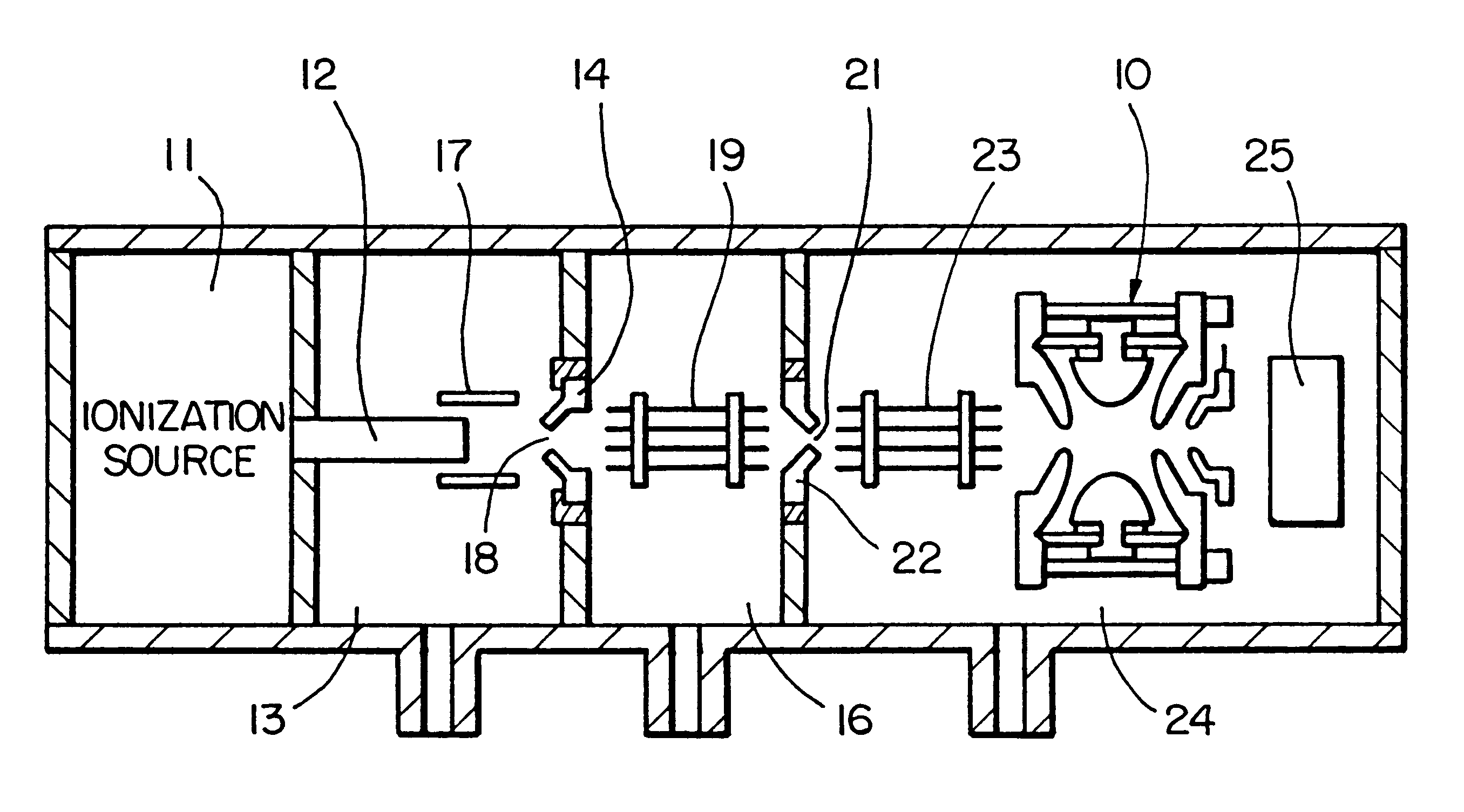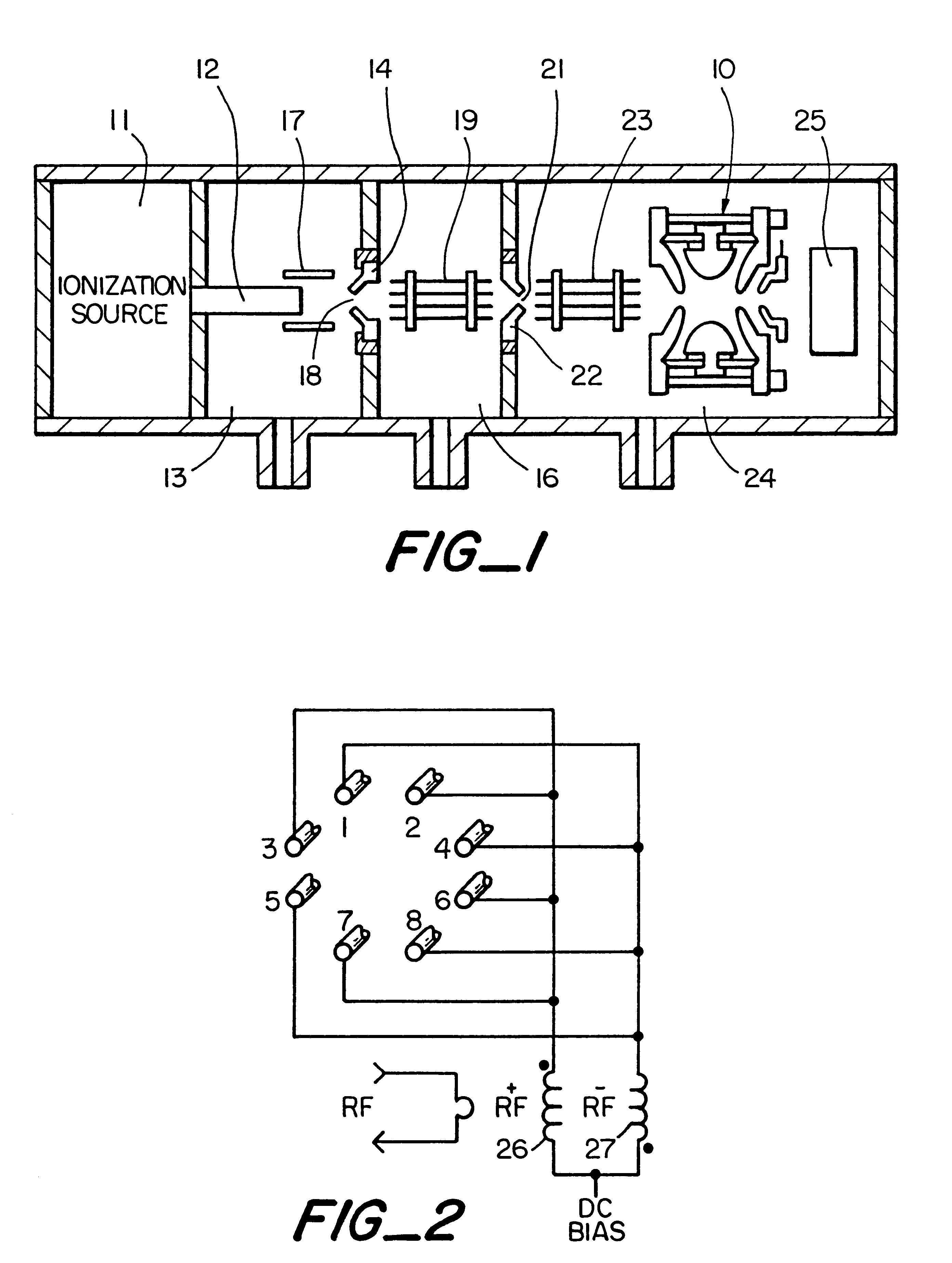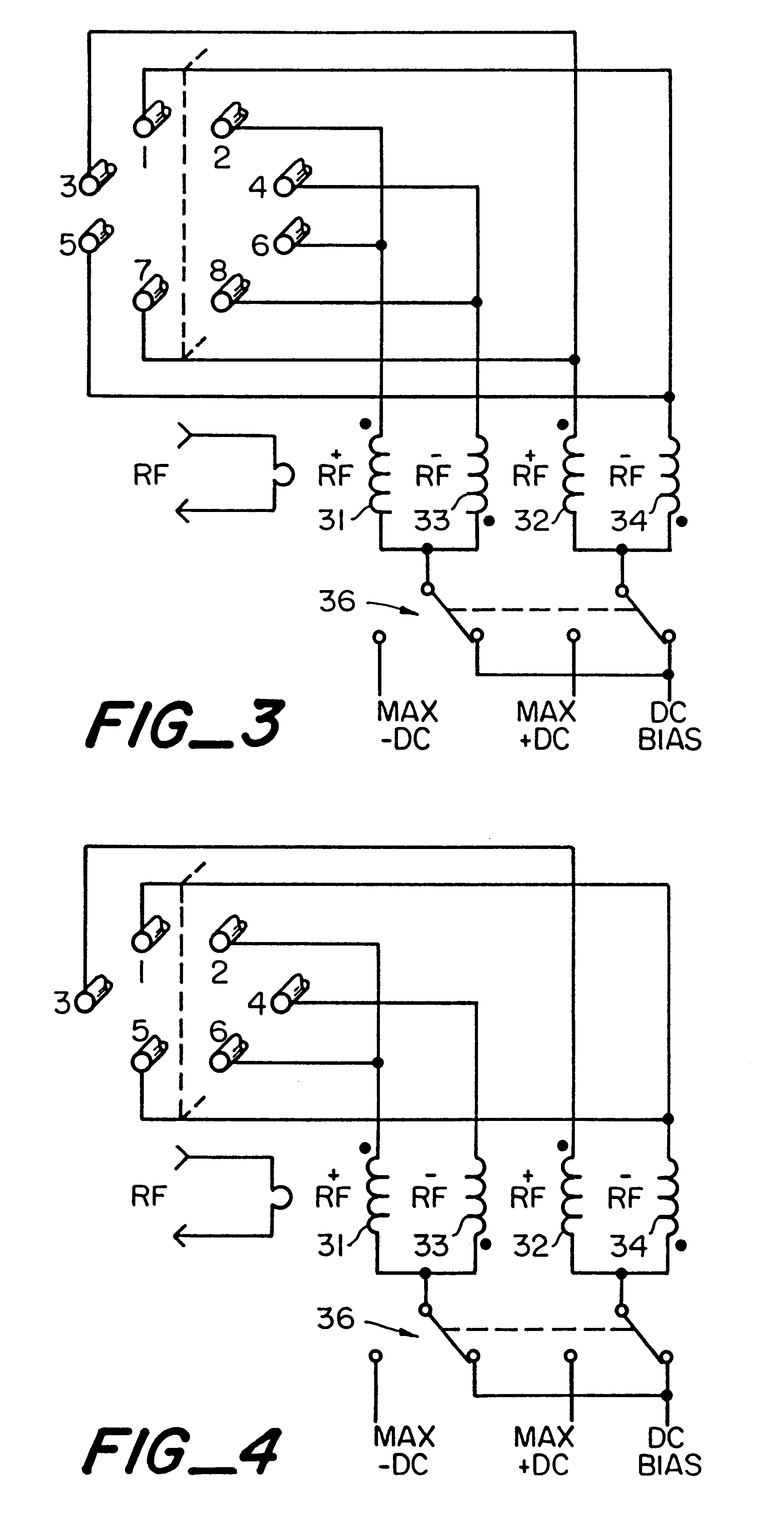Method and apparatus for transferring ions from an atmospheric pressure ion source into an ion trap mass spectrometer
a mass spectrometer and atmospheric pressure ion technology, applied in the direction of instruments, particle separator tube details, separation processes, etc., can solve the problems of high energy noise particles still entering the blocking potential, severe limit the signal-to-noise ratio in the mass spectral field, etc., to achieve the effect of reducing random nois
- Summary
- Abstract
- Description
- Claims
- Application Information
AI Technical Summary
Benefits of technology
Problems solved by technology
Method used
Image
Examples
Embodiment Construction
Referring to FIG. 1, an atmospheric pressure ionization source 11 such as an electrospray ionization source or an atmospheric pressure chemical ionization source is connected to receive a liquid sample from an associated apparatus such as a liquid chromatograph or syringe pump and which supplies a source of ions to an ion trap mass spectrometer 10. The source 11 forms ions representative of the effluent from the liquid chromatograph. The ions are transferred from the ion source to the mass spectrometer by an ion transfer assembly. Particularly, the ions are transported from the ion source through a capillary 12 into a first chamber 13 which is maintained at a lower pressure (.about.1 TORR) than the atmospheric pressure of the ionization source 11. Due to the differences in pressure, ions and gases are caused to flow through the capillary 12 into the chamber 13. The end of the capillary is opposite skimmer 14 which separates the lower pressure region 13 from a still lower pressure se...
PUM
 Login to View More
Login to View More Abstract
Description
Claims
Application Information
 Login to View More
Login to View More - R&D
- Intellectual Property
- Life Sciences
- Materials
- Tech Scout
- Unparalleled Data Quality
- Higher Quality Content
- 60% Fewer Hallucinations
Browse by: Latest US Patents, China's latest patents, Technical Efficacy Thesaurus, Application Domain, Technology Topic, Popular Technical Reports.
© 2025 PatSnap. All rights reserved.Legal|Privacy policy|Modern Slavery Act Transparency Statement|Sitemap|About US| Contact US: help@patsnap.com



